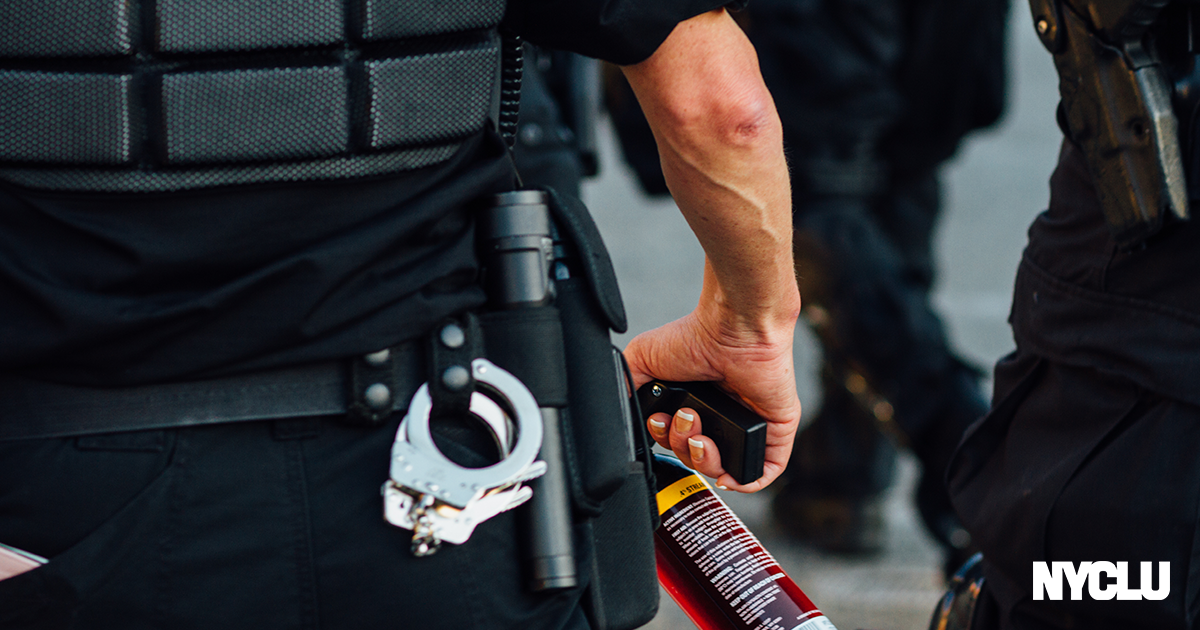Albany Squanders an Opportunity to Ban Chemical Weapons

It’s one thing for politicians to proclaim that they support calls for racial justice and reining in police abuse. But all too often, when the time comes to actually enact change, our leaders get cold feet.
This was on full display during an Albany Common Council vote earlier this month on a bill known as Local Law C. The bill would have barred the Albany Police Department from using chemical weapons like tear gas and “kinetic energy munitions” such as rubber bullets.
The bill was voted down even though only four of the 15 council members voted against it. But because four council members – including one of the bill’s sponsors – voted “present,” instead of taking a position on the legislation, the bill failed.
This decision will undoubtedly have serious negative consequences for the health, safety, and rights of people in Albany. Inhaling tear gas doesn’t just cause eye irritation and pain, it also attacks the skin, lungs, and mouth. The gas – which is banned even during wars under the Geneva Conventions – often causes coughing, vomiting, chest tightness, nausea, wheezing, and shortness of breath. Exposure can even result in glaucoma, fatal respiratory failure, and death from chemical throat and lung burns.
The APD’s determination to continue using these weapons is but one more example of the nationwide militarization of policing that is now infecting our region.
Rubber bullets can cause serious or fatal injuries, especially if they are used incorrectly in a chaotic situation. These weapons are sometimes called “less than lethal,” but they can and do kill people. A study published in 2017 found that three percent of people hit with rubber bullets die from their injuries and 15 percent were permanently injured.
Tear gas and rubber bullets don’t just have physical consequences, this type of grossly overbroad and excessive force prevents protesters’ exercise of their First Amendment rights.
The bill to ban these dangerous weapons came after the APD unleashed tear gas on Black Lives Matter protesters last year. As the bill sponsors’ original statement of support recounted:
“[T]he damage spread mostly to areas of the City inhabited predominantly by people of color and businesses owned by or serving communities of color… Many residents had their windows open and no way to escape the fumes; or were peaceful protesters or bystanders and residents (including babies and children). It is well established that many of these residents have asthma and other pre-existing conditions that are especially prone to severe reactions to tear gas.”
Joyce Love – one of the council members who voted “present” on the bill – told the press she continues to suffer severe health problems after being caught in the APD’s tear gas barrage in the spring of 2020. “My sight has not came back yet,” she said in May. “I’m still dealing with my breathing because I have crystals in my lungs from the tear gas.”
Local Law C’s opponents – including Mayor Kathy Sheehan – pushed for amendments that would have watered down the legislation. One proposed amendment, for example, would have allowed the use of pepper spray and rubber bullets during a riot. But New York’s definition of what constitutes a riot is worryingly vague, and again, these are weapons international treaties bar even during war.
Without the amendments, the legislation was doomed, and an opportunity to begin to demilitarize our police was squandered.
The APD’s determination to continue using these weapons is but one more example of the nationwide militarization of policing that is now infecting our region. During Black Lives Matter protests in Saratoga earlier this summer, law enforcement officers arrived in armored vehicles and battle gear.
And in Troy, police are using state funds to buy a sound cannon that can cause severe hearing loss, along with new tactical battle dress and high-tech equipment for gas masks.
Now Albany appears ready to continue in this dangerous movement. Just a few months after the George Floyd protests, according to a media source that obtained purchase invoices, the APD paid thousands of dollars to replenish and add to its tear gas stock.
Yet public opinion, judging by the Common Council’s multiple public comment periods, is overwhelmingly in favor of Local Law C.
In addition, the city’s own Policing Reform and Reinvention Collaborative report favors a ban. Its report uses unambiguous language: in the section “Interactions with Members of the Community,” goal number one is “Ban the use of tear gas and decrease the use of military style weaponry by the Albany Police Department.”
Yet Local Law C fell victim to political cowardice. The APD and its allies applied immense public and private pressure on council members to scuttle the bill. As so often happens, they got their way.
Common Council President Corey Ellis now claims an alternative to Local Law C is “in the formative stages.” But council members don’t need an alternative. They need to take a stand against police violence.
